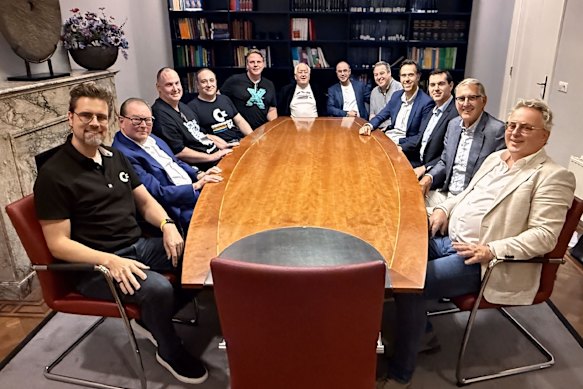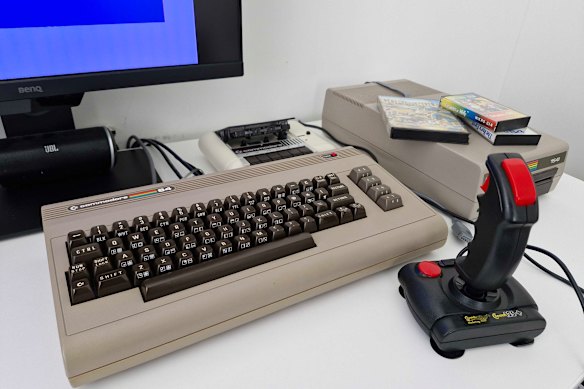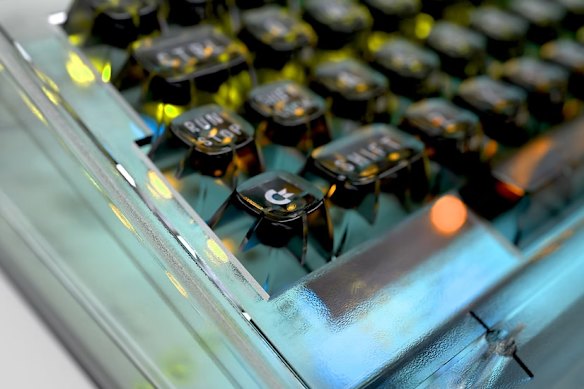The iconic Commodore 64 home computer is set to make a comeback, and a full-on return to relevance for the brand may follow as a group of enthusiasts from the Commodore fan community have acquired all rights and trademarks associated with the company.
The global group – including Australian retro hardware experts and led by British actor Christian Simpson, also known as retro computer YouTube personality Peri Fractic — has formed a new incarnation of the company called Commodore International.
As well as resurrecting the beloved Commodore 64 in a way that supports technology old and new, more than 30 years after the machine was discontinued, the company plans to produce new hardware that embodies the friendly computing and creativity of the 1990s.
Simpson has appointed members of the Commodore enthusiast community — many of whom have previously created unofficial Commodore 64 hardware and products — to various roles in the new company. He has also engaged individuals who worked for Commodore decades ago, including the co-creator of the Commodore 64, Al Charpentier, as technical adviser.
Jake Young, a manufacturer of retro tech based in South Australia, will serve as Commodore’s chief technology officer. He said the situation had worked out far better than any of the team could have expected, including Simpson. While the YouTuber had originally approached Commodore angling for an exclusive licence to market community-made hardware as official, he was surprised when the then-owners of the brand offered to sell him the company outright.
“There had been several other buyers who tried to purchase the brand, but for one reason or another, it had all fallen through. And the current brand owners, they had come to own the brand by virtue of a default on a loan. So I don’t think they had a real interest in it,” Young said.
“The trademarks were starting to lapse, and I believe the owners were just ready to walk away. So Peri and the rest of us, we kind of stepped in at a point where, if we hadn’t negotiated the deal that we did, Commodore probably would have faded out of existence in the very near future.”
The leadership team at the new Commodore International, including Christian Simpson (left).
While Simpson was cautious in his YouTube video announcing the deal to point out that the funds (“somewhere in the low seven figures”) were not yet secure, he announced soon after that it had been finalised. Thanks to the help of unnamed angel investors, the new Commodore was born.
Released in 1982, the Commodore 64 is recognised as the all-time best-selling model of a desktop computer. Many Australians will remember it as their first computer, whether they used it to run business and accounting software, to learn programming, as a word processor or as a games machine. The easy accessibility of software on the Commodore 64 kept it relevant in Australia long into the ′90s, despite the rise of more impressive home video game systems.
An original Commodore 64, with floppy disk drive and datasette, at Jake Young’s facility in Adelaide.
Like many ’80s computers, the Commodore 64 has all its hardware in a single unit under the keyboard, so users needed only to plug it into a monitor or TV to get started. There was also a range of disk drives, printers, modems, joysticks and other devices to plug in.
The simple and tactile nature of the machine compared with the computers of today has given it major nostalgic appeal, and there remains a demand for compatible parts, systems and software.
That’s how Young came to be involved in the scene. He has worked full-time in retro computing for the past five years after leaving his job in the renewable energy sector and establishing a company called Retro Fuzion in 2020.
The Commodore 64 Ultimate also comes in a transparent version with lights inside.
“After COVID hit, we had a shift in government subsidies for renewable energy systems, we couldn’t go out and meet with clients and do our ordinary consultations. It kind of shut down the entire industry,” he said.
“Being a little bit of a tinkerer, and having quite a large vintage computer collection myself, I started doing some work for local enthusiasts. Restoring systems and doing upgrades. It’s just kind of grown organically from there.”
Commodore International chief technology officer Jake Young.
Early on, Young identified a gap in the market for certain reproduction parts; things that break on 40-year-old computers but are impossible to replace unless you harvest them from another unit. Retro Fuzion now focuses on engineering and producing these parts, and has been able to expand to hire additional staff and secure property for an office space and warehouse.
Last year, the company completed a successful Indiegogo campaign to produce replacement casings for the Commodore 64, in the original “breadbin” shape. Young sent some to Simpson to feature on his YouTube channel, and that’s where their business relationship began.
Also on board is fellow Australian Leo Nigro, who previously created a custom Linux operating system used by Commodore for its 2011 Intel-based Commodore 64x PC, to allow old games to be played on the modern hardware. He has joined the new company as lead engineer.
The company’s first order of business is to ship something called the Commodore 64 Ultimate. Using hardware emulation to get performance as close as possible to the original machine while leaving room for options such as more memory or extra sound channels, the nostalgic computer can replace the original but also supports modern standards like HDMI, USB and Wi-Fi. It even works with modern printers. It comes in the original beige design, or translucent plastic with RGB lighting, and starts at $462.
Loading
“It supports your original disk drives and monitors, your datasette, you name it. Pretty much all peripherals are compatible, as well as the vast majority of games and programs that we’ve tested,” Young said.
“We’re saying at least 99 per cent compatibility, but it might be much more than that.”
Users who don’t have a collection of original Commodore 64 material to plug in can still use the Ultimate with a modern screen, storing programs on USB and SD card, or downloading them over the internet. The company plans to bundle the machine with a collection of games and software both old and new.
But while Young is confident of strong demand for the new version of the Commodore 64, the resurrected company also has an eye to the future. In his press release, Simpson said Commodore would be an optimistic digital detox brand, aiming to fulfil the ′90s-era promise of future technology that served people, which had been stolen by addictive screens and greedy corporations.
“We want to take a step back to when tech was much simpler. It was more friendly, more inviting, and there was an excitement about the future. I don’t think we have that same feeling today,” Young said.
“We’re trying to tap into the nostalgia of the original brand, but we’re also mindful that in order to build a sustainable Commodore and not go bankrupt once again, we need to innovate as well. We’ve got a lot of exciting things in the works.”
Get news and reviews on technology, gadgets and gaming in our Technology newsletter every Friday. Sign up here.



